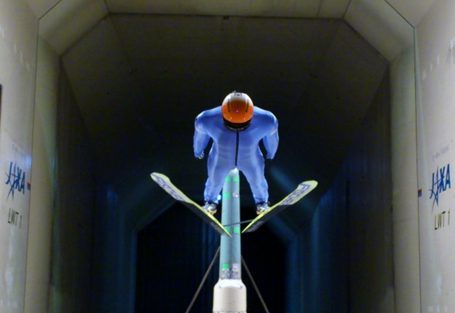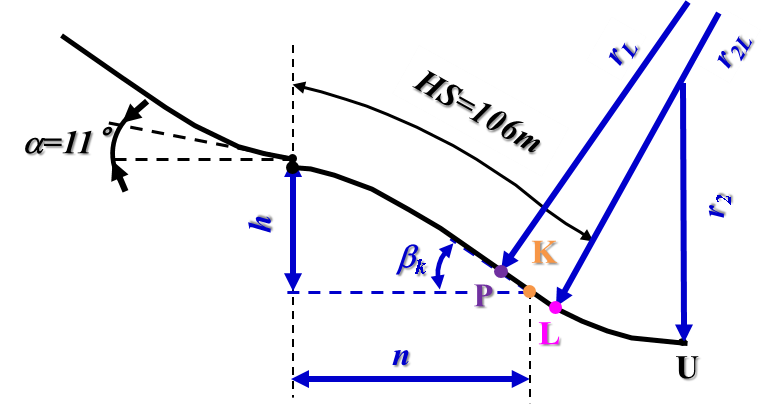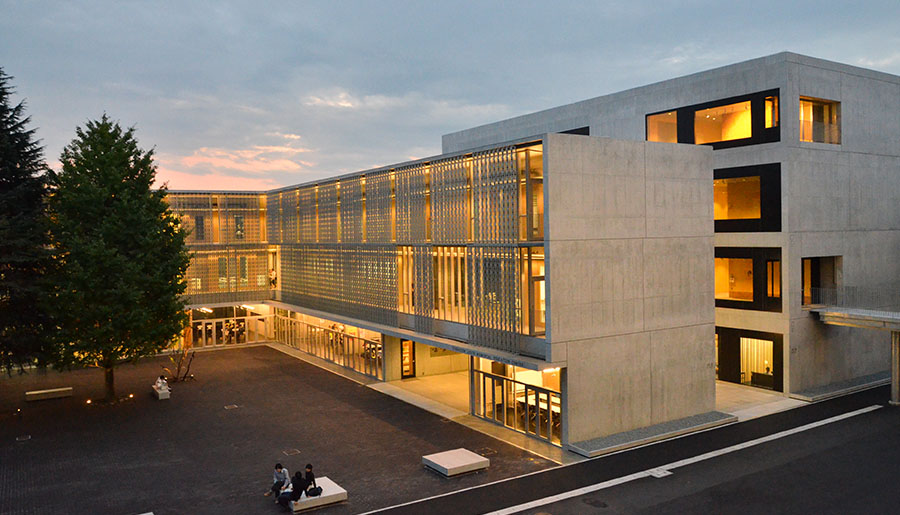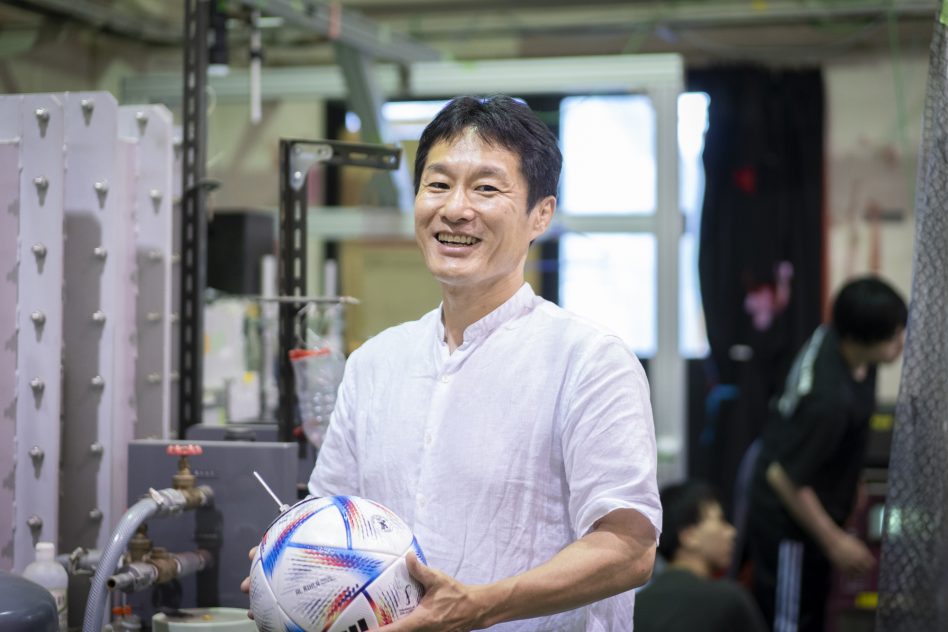 3S is the abbreviation for “Seiwa Scholars Society,” which consists of the past and current Inamori Research Grant recipients. The 3S has evolved since 1997 with the hope that the interactions among the various specialties of the 3S members can lead to the further development of the research of their own. In the series “Visiting 3S Researchers,” we interview researchers in 3S who are very active in a variety of fields.The 13th interview is with Dr. Kazuya Seo (2006 Inamori Research Grant Recipient) from Kogakuin University of Technology & Engineering.
3S is the abbreviation for “Seiwa Scholars Society,” which consists of the past and current Inamori Research Grant recipients. The 3S has evolved since 1997 with the hope that the interactions among the various specialties of the 3S members can lead to the further development of the research of their own. In the series “Visiting 3S Researchers,” we interview researchers in 3S who are very active in a variety of fields.The 13th interview is with Dr. Kazuya Seo (2006 Inamori Research Grant Recipient) from Kogakuin University of Technology & Engineering.
The Paris 2024 Summer Olympic Games are likely still fresh in our memories. Watching highly trained athletes compete at the peak of their abilities left a profound impression on many of us. Indeed, sports play many different roles, from expanding human potential and entertaining spectators to uniting participants in the spirit of sharing. We had the privilege of visiting Dr. Kazuya Seo of Kogakuin University of Technology & Engineering, who kindly shared insights into his research in sports engineering, a scientific discipline that studies the world of sports.
Sports Engineering is a Multidisciplinary Study that Incorporates Multiple Academic Fields
── Dr. Seo, what exactly is “sports engineering,” the field in which you specialize?
Dr. Seo (title omitted below) It’s a multidisciplinary study that draws from various fields, so to speak. Different sports events have different issues to address. For example, my academic background is in fluid dynamics, but I end up handling whatever comes up on site, as I’m drawn to tackling a wide range of problems.
For instance, I studied how a rugby ball flies because I enjoy rugby. There’s a type of kick called a high punt, where you kick the ball high, anticipating your teammates will charge toward it. When kicked high into the air, the rugby ball sometimes wobbles right and left, much like a balloon. Having played rugby in university, I was always curious about why this happened. That initial curiosity led me to conduct research that has since branched into various areas.

Partly due to my research involvement in rugby, I was once invited to support wheelchair rugby players. To assist them, I needed to work on the axles, bearings, and seats of specially designed sports wheelchairs, or devise gloves and athletic supports. Many tasks lay outside my primary expertise, so I had to learn what was necessary to design and deliver effective equipment, treating it as a contribution to society.
As a researcher, my approach is to utilize data science to integrate Fluid-Structure Interaction problems that involve multidisciplinary fields, including kinetics and kinematics concerning humans and fluid mechanics, flight dynamics, and structural dynamics that concern equipment. Since my expertise spans multidisciplinary areas, I often find it difficult to describe my specialization in one word. If anything, I see myself as a researcher who leverages collective knowledge, which aligns well with sports engineering.
── What interests you about sports engineering?
Seo Sports engineering addresses topics that are familiar and relatable. As a graduate student, I studied cryocoolers. When I became a faculty member, I continued with this topic, but it didn’t resonate well with students in the Faculty of Education, where I was at the time, as they found it somewhat inaccessible. So, I decided to shift to an multidisciplinary area that would engage students more directly and changed focus to sports engineering.
Of course, I also felt that sports engineering offered a wide range of research challenges that I knew I would be keen to pursue. Back then (in the 1990s), sports engineering was still a relatively new field. Some critics questioned the value of an engineer focusing on sports rather than traditional industrial topics. Perhaps the growth of sports engineering as a field today reflects Japan’s openness and the domestic peace that allows us to explore diverse research pursuits.
The very first topic I chose as a sports engineer was ski jumping, inspired by the stories my graduate school supervisor often shared about his childhood experiences with the sport. Using a wind tunnel, which artificially generates airflow to simulate conditions faced by ski jumpers, we measured the lift and drag (aerodynamic force) on a full-size mannequin of an athlete. Based on these measurements, we explored the ideal timing and body positioning for jumpers to maximize their distance.

I researched ski jumping around 1999, and 15 years later, an official from Yamagata City Hall approached me at my lab at Yamagata University, where I was then employed. Upon hearing their story, I immediately saw how my research could contribute to the real world.
Zao Schanze (meaning “ski jump” in German) took on my recommended design. Witnessing such a rare renovation project firsthand was an invaluable experience, giving me a strong sense of active contribution to manufacturing and innovation.
Designing More Exciting Sports Events with Science
── What did you suggest about the renovation of Zao Schanze?
Seo My approach began with identifying what makes a good ski jump, leading to numerous discussions with my contacts at the Yamagata municipal government. To give you a rough account of the three targets we set, we wanted to keep renovation costs low, ensure safe landings, and enhance the spectator excitement of the sport. We then started discussing what shape of ski jump could achieve all this.
── I didn’t know you also considered how to make events fun to watch.
Seo The primary focus in designing a ski jump is ensuring athlete safety during landing. However, enhancing the excitement of the sport is also critical. Whether an event is enjoyable to watch often depends on a certain sensitivity, and sports engineers frequently face the challenge of quantifying this sensitivity. This is what makes sports engineering both challenging and rewarding. For Zao Schanze, we deliberately chose an accurate reflection of athletes’ skills in jump distance as a core factor for maximizing excitement and conceived how we could quantify it.
Once you set targets, you optimize them. To optimize multidisciplinary targets without prioritizing them, we use what’s called a Pareto solution. I needed to determine a total of six design variables, including the slope’s inclination (βk in the graph below). We also set 14 constraint conditions (restraint conditions), such as meeting the latest international design standards, to find the optimal shape. At first, we set 21 constraint conditions, but the calculations stalled for a month, likely because the solution we sought was unattainable. To compromise, we removed seven conditions and eventually found the optimal solution.

With the Pareto solution calculated, the next step is to create a graph that allows those developing the plan to gain creative insights. We then met with our contacts for discussions, leading us to conclude that a ski jump that accurately reflects athletes’ skill in flight distance aligns with one that ensures safe landings. To finalize the design, we selected the shape of a ski jumping hill that accurately reflects the athletes’ skill in flight distance, while also considering reasonable costs. This led to the creation of the Zao Schanze as it stands today.

── It’s interesting to know that engineering research can make sporting events even more exciting.
Seo Right. I would say that there are more chances for engineers to shine than you might think, as the real thrill of many sports is created through interactions between humans and things, such as equipment, sportswear, and fields. This is particularly true for Paralympians, as there remains ample potential for enhancing support devices and sports gear, since each athlete’s needs are unique.
That said, it’s challenging to define what makes sports exciting. Take rugby as an example. To make games more fun to watch, what specs should a rugby ball have? Should it fly far or not? Should it bounce well or not? Should its trajectory of a high punt waver or not? It’s difficult to say which is preferable.

Once target setting is complete, researchers can start determining the optimal design for equipment. Most of my research work now focuses on analyzing actual phenomena, but I also aim to make proactive suggestions regarding effective equipment and skills. I’m confident that we can add to the appeal of sports if we can tap into engineering knowledge to make sporting events even more entertaining.
Creating a System that Suspends a Ball for Accurate Wind Tunnel Experiments
── Could you explain the magnetic suspension and balance system you’re currently working on?
Seo Sure. It’s used for wind tunnel tests, and only a few laboratories in the world have such systems. Wind tunnel tests involve directing air artificially over an object to examine aerodynamic forces. Traditional setups require a prop to support the object, such as a ball, but the airflow around the object is disturbed by the prop. This distortion is unavoidable due to gravity, but it prevents us from observing the precise aerodynamic effects on the ball if it is “skewered” on the prop.
The magnetic suspension and balance system eliminates the need for a prop by using magnetic fields to suspend a model in mid-air. The Institute of Fluid Science, Tohoku University has the world’s largest magnetic suspension and balance system, but it’s primarily used for testing long and narrow objects like javelins. I once asked them if we could use the system to test a ball, but they said they couldn’t let us do so any time soon because it was technically challenging. So, I decided to assemble one myself.


── It’s strange to see the ball floating.
Seo It suspends a model in place by increasing current to boost the magnetic forces in response to any force caused by airflow acting on the ball. However, the current design can only support spherical models and doesn’t work for irregular shapes like a rugby ball. My goal is to further develop the system to enable testing with rugby ball-shaped models as well. To make it happen, I intend to scale up the magnetic suspension and balance system going forward.

Becoming the Fourth International Sports Engineering Association (ISEA) Fellow in the World
── May I ask what “ISEA” is on the plaque on your desk?
Seo ISEA stands for the International Sports Engineering Association, the world’s largest international academic association in the field of sports engineering. This plaque was presented to me when I was selected as an ISEA Fellow. I was the fourth recipient of this honor in the world and the second in Japan.
ISEA organizes a biennial international conference series, and I always try to attend to present my research. This past July, I was in the UK for the latest conference. Due to the weak yen, prices were so high there. A cup of coffee and a croissant cost 2,000 yen, and one tube ride cost 1,200 yen. That was kind of rough! (laughs)

Seo I also visited the UK last March at the invitation of Imperial College London, where I shared some topics on the magnetic suspension and balance system. Interestingly, there were efforts in the UK to develop such systems under the lead of the University of Oxford around 1960. Although they pioneered this research, enthusiasm waned over time, and much of the expertise has since been lost. This has led them to effectively re-import their own innovations by inviting experts like me or faculty from the Institute of the Fluid Science, Tohoku University to share our work.
── Wasn’t it hard to travel to the UK repeatedly in such a short period?
Seo No, not at all. I love traveling. But I get motion sickness easily, so turbulence during flights is rough. Prior to this interview, you sent me a list of questions, and one of them was, “What do you think you would do if you hadn’t chosen a research career?” My response to that question is, “A job that requires frequent travels and can be done independently.” Ideally, I would want to drive myself on these travels, as I like to do things at my own pace.

| By My Side |  In his lab, Dr. Seo keeps sports equipment, such as rugby balls and footballs, within easy reach. “These balls are experimental tools. To understand the forces acting on them during games, we make casts of them to create models for wind tunnel experiments.” In his lab, Dr. Seo keeps sports equipment, such as rugby balls and footballs, within easy reach. “These balls are experimental tools. To understand the forces acting on them during games, we make casts of them to create models for wind tunnel experiments.” |
|---|---|
| This Book |
A travelogue published in 1986. “It was difficult to name one book only. I’m fond of travel stories by Kotaro Sawaki and Makoto Shiina, as they evoke a sense of freedom. I also like historical works, such as Sanada Taiheiki by Shotaro Ikenami and Traveling on the Edo-period Highways (book title translated) by Ryotaro Shiba.” |
Kazuya Seo
Professor, Department of Mechanical Engineering, School of Engineering, Kogakuin University of Technology & Engineering. Completed the Doctoral Program, Graduate School of Engineering, the University of Tsukuba (Research Fellowship for Young Students, Japan Society for the Promotion of Science [DC1]), where he received his doctoral degree in engineering in 1997. After posts as Lecturer, Faculty of Education, Yamagata University (1997), Assistant Professor, Faculty of Education, Yamagata University (2002), Professor, Faculty of Education, Art and Science, Yamagata University (2012), and Professor, Faculty of Science, Yamagata University (2018), he assumed his current position in 2022. Visiting Researcher, University of California, Los Angeles (1999–2000). In recognition of his outstanding achievements and contributions to academic development in the field of sports engineering the world over, Dr. Seo was elected an ISEA Fellow in 2016.
Interview and original article: Izumi Kanchiku (team Pascal)
Photo: Yuko Kawasaki


